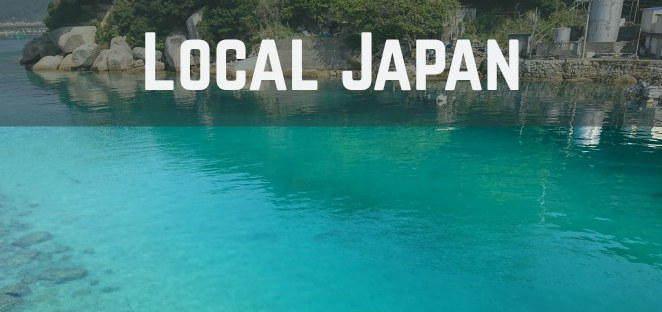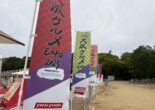
Local Japan: Otsuki – Charming Town in the South
The town of Ōtsuki in Kochi Prefecture would be one of the last places many people would choose to visit when planning their vacation; much less decide to live. Similar to other small towns in Japan, Ōtsuki’s population is gradually decreasing because it is unable to offer young professionals a job in an up and coming industry with agriculture/fishing being the largest source of income for the town. As of October 2017, there are a total of 5252 people living within the town.
And I, an American, am part of that 5252 population.
I probably sound like I have lived here in Ōtsuki for a while, being able to spew random facts about the town with such ease. In reality, it’s because I have researched statistics about this town prior to moving here.
This is not my first time moving to Japan. I have lived in Okinawa, Japan for 5 years due to my father being in the military, and I have visited Japan at least once every 2 years for vacation/study abroad since then. I am by no means a Japan newbie, but when I received my placement notification in April after having applied for the JET Programme, I was at a loss. The placement notification stated I would be working for the Board of Education in a town called Ōtsuki in Kochi Prefecture.
My first thoughts were…”Where is Kochi Prefecture?”
From the prefectural level, I was already confused about my placement.
For those living in Japan, they may know Kochi Prefecture as the prefecture that Sakamoto Ryoma was born or that it is well known for a dish called katsuo no tataki (seared bonito), but as a foreigner…I had no idea where it even was. Is it at least located on mainland Japan?
I first googled “Kochi”, and found that there is a city in India with that name. So obviously this wasn’t what I was searching for.
I then googled “Kochi, Japan” and found out that it is not, in fact, on mainland Japan. Rather, it is on one of the most rural islands of Japan called Shikoku and is fairly abundant in nature; approximately 80% of the land in Kochi Prefecture is covered in trees. This sounds all fine and dandy except for the fact that I had requested a suburban placement on my JET application. One thing I knew from my brief Google search is that this prefecture is far from what I wanted. But, maybe Ōtsuki is a little bit more rural than I thought?
To narrow the search down more, I finally googled “Ōtsuki, Kochi” and landed on a Wikipedia page about the town. I was honestly surprised at how much information I could find about this town, but…It certainly was not what I had requested on my application. I learned from the Wikipedia page that Ōtsuki is on the southern-most tip of Kochi Prefecture, it is well-known for its extensive array of fish that live along the coast, and it is a secret haven for divers because of its clear, blue waters.
Having lived in Okinawa, Japan and Florida in the United States of America (both famous for its beaches) I assumed the beaches in Ōtsuki would never compare to the two. After all, you can’t have BOTH clear, sandy beaches and mountainous terrain. Even this thought I had about the environment was incorrect.
On my first week of living in Ōtsuki, I was shown around town by my co-workers and they introduced me to a part of our community called Kashiwajima. Kashiwajima is an island connected to the main part of Ōtsuki by a small bridge and is located at the furthest point from the rest of Shikoku. It is connected to Shikoku by a bridge that can be traveled by bus or car. The beaches along the coast of Kashiwajima are home to over 1300 different species of fish which makes this island ideal for divers and snorkelers alike. It is located along the Pacific Ocean and is the entrance of the Seto Inland Sea, so this creates a change in the look of the sea and its currents almost daily. I visited Kashiwajima on my second day in Ōtsuki, and to this day, I can’t stop reveling in the clearness of the ocean water. The water looks as clear as a river, and despite this island being completely surrounded by ocean (the island is only approximately 4km wide), it doesn’t have a strong scent of salty ocean that you’d expect from a beach town.
The beaches of Kashiwajima were also significantly more bright and blue than I ever thought any beach could be!
As much as I love the beaches and the mountains surrounding me, my friends from America find it hard to want to visit Ōtsuki when there are closer places to visit with more traditional tourist locations like Tokyo and Osaka. I came from the state of Virginia where I have 3 large airports within an hour or so of driving. For me to travel to Ōtsuki from Virginia, not only does it take over 13 hours of flight to arrive in Tokyo, it took me yet another hour to fly to Kochi, then 3 hours to drive to Ōtsuki from Kochi Ryoma Airport. If you add that all up, that’s about 17 or so hours total of constant travel just to reach my town.
But because it is so far from even the city of Kochi, that’s why this town is able to conserve all of the nature that surrounds the neighborhood. This escape from the city is what invites many visitors to this town; especially during warmer months.

The bright blue waters of Kashiwajima…

The trees sprawling all over the mountains…

The temples and shrines that continue to be worshipped and cared for by many generations of people… – Tsukiyama Shrine

Ōtsuki school lunch
These are all things that Ōtsuki has to offer, and they are much more than I expected to find before moving here. I find myself appreciating, and even longing for, nature after having become accustomed to the beauty of my community.
On top of the beauty, the food here is phenomenal! I have always been a food junkie, so I could never succeed in losing weight, but how can I focus on that when the food is pleasing to both my stomach and eyes? The school food (給食) at Ōtsuki’s Elementary School and Middle School won 2nd place in 2011 for best school food in an all-Japan school food competition. The town’s signature ichigōri is also an award winning treat that anybody can purchase at our local michi no eki; it won 2nd place in 2016 for best michi no eki food in Japan. Michi no eki throughout Japan are extremely unique and popular, and are more like a flea market than a rest area along main roads. The michi no eki in Ōtsuki, called Fureai Park, is known amongst many tourists from out of town as one of the best locations to purchase freshly caught fish, and it is possible to request fish to be cut up in the back of the market if you are in the mood for fresh sashimi!
Despite all of the awards that many products in this town have won, in the long run, it is still a town struggling to keep young people and attract new people to its community; much like many other inaka towns in Japan. Although I took a risk leaving my stable job in America as a Regional Account Manager for a world renowned company and moving to a random unknown town in Japan, I believe that my job as a Coordinator of International Relations (CIR) for this town is something I feel was worth taking the risk. As a CIR, I have the opportunity to translate and make pamphlets/posters, write blogs and news reports on the foreigner perspective of living in Ōtsuki, and even teaching part-time in schools to give students the exposure to foreign languages and cultures they may not have been able to experience prior to my tenure. Although I have never had the opportunity to be a PR professional or international ambassador to an entire community before, my perspective and work experience in America has given me the power to spread the charm of this town to those across the world in my own little way. I can’t singlehandedly save Ōtsuki and its decline in population, but with little steps–like writing this blog post–I can let readers know that there are many hidden gems in Japan like Ōtsuki. I have been living in Ōtsuki, Kochi for almost 4 months now, and quite frankly, although I knew absolutely nothing about this town prior to moving here aside from what I could find on the limited online resources I could rely on, I am in love with this town and what it has to offer, so I hope to continue to raise awareness in the smaller, under traveled towns in Japan little by little.
With good food, scenery that can’t be beat, and the experience of being able to live in or visit the inaka of Japan, this town has many things it can offer foreigners as well as Japanese natives alike. Although I came into this town with minimal knowledge about the area, I have grown to not only become accustomed to my community, but to also feel like a part of the community. There is one popular saying that is told throughout this prefecture: 「高知家、はいろんな家族で大家族。」“Kochi-ke is a large family built of many families.” Everybody who visits or lives in Kochi will always be a part of the Kochi family.




